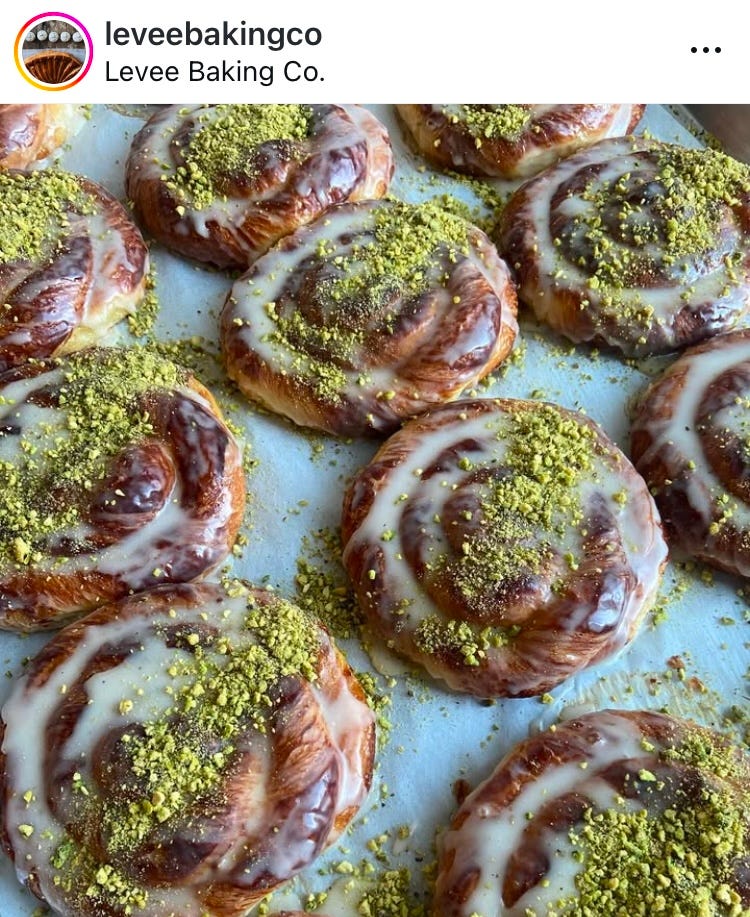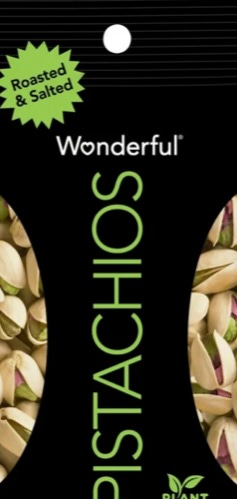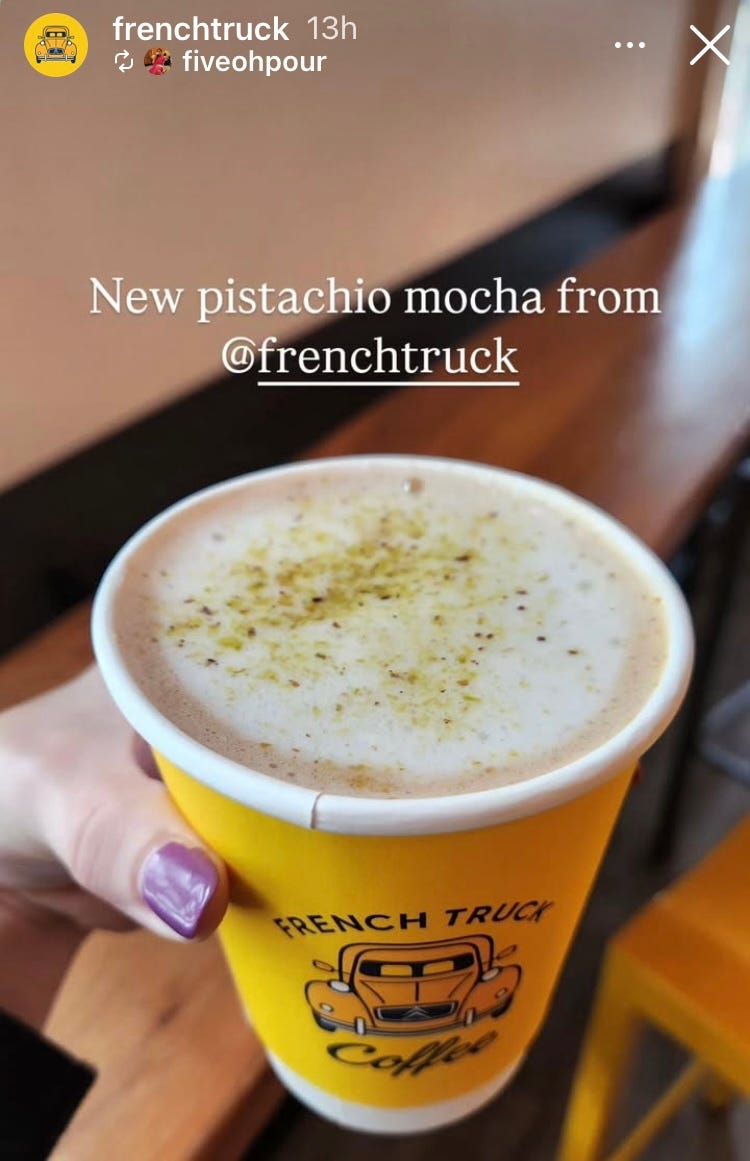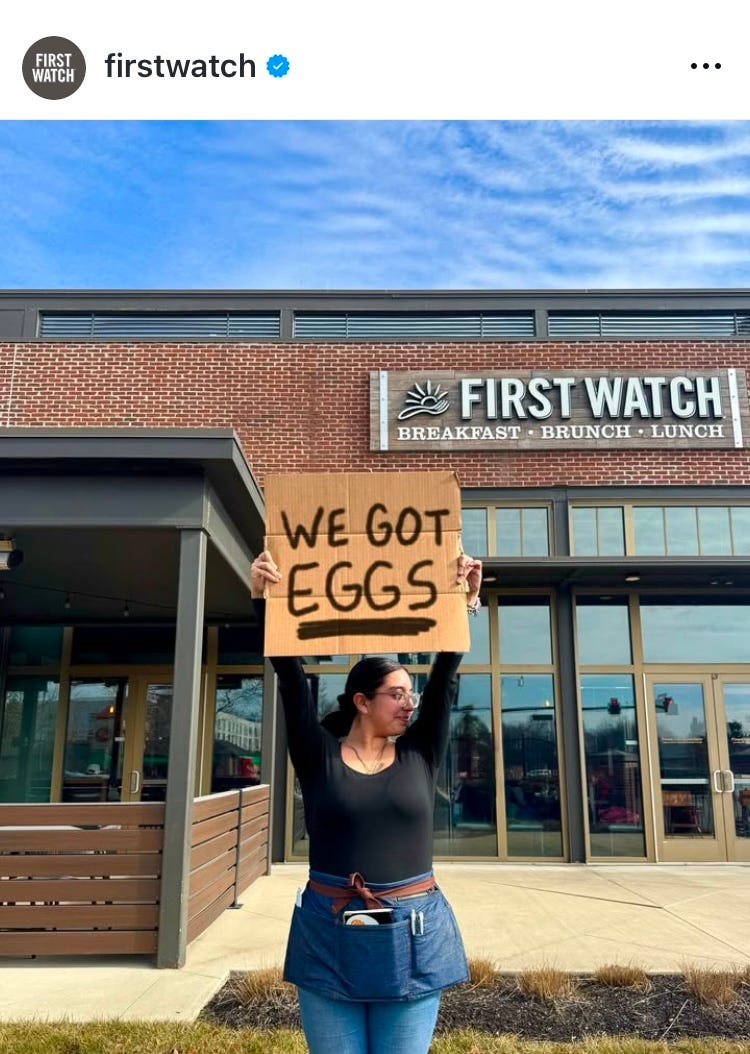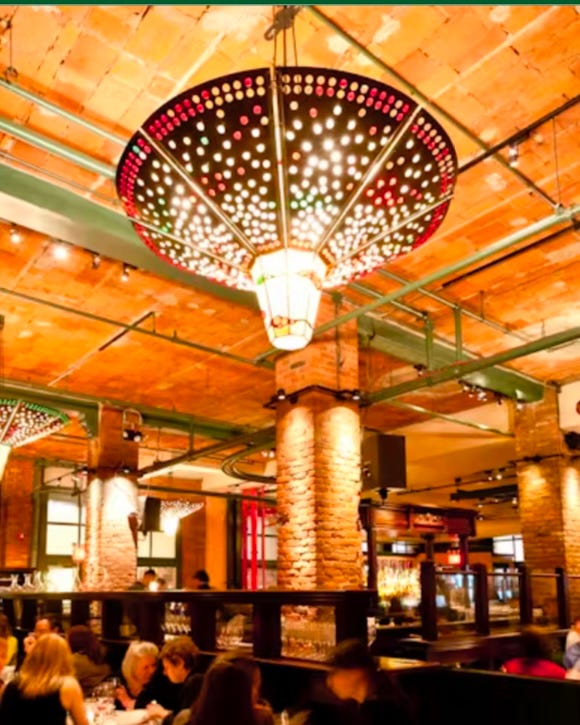Pistachio Is the Flavor of 2025, But Can Growers Enjoy Its Success?
The biggest market for pistachio may not buy as much
Hello, and Happy St. Patrick’s Weekend! In New Orleans, today is Super Sunday, when Mardi Gras Indians parade in their stunning suits. We’re also coming up on St. Joseph’s Day, when Catholic churches around the Crescent City put on altars replete with food and host lunches and dinners.
Jewish friends recently celebrated Purim and I did not get a chance to hunt down a hamantaschen. Spring is arriving this week, although everyone knows that one last snowstorm can easily hit.
This week, I’m looking at a green food that isn’t Irish but has exploded in popularity.
The Boom In Pistachio’s Popularity
I recently told paid subscribers about Dubai Chocolate, a delicious combination of chocolate, crunchy ingredients and pistachio cream. It is only one example of how pistachio has stepped forward to become a widely available flavor, in the same way that matcha held the spotlight the past few years.
The United States has passed Iran to become the world’s biggest producer of pistachio nuts, while California is the single-biggest pistachio growing state. This year, the pistachio market is estimated to be around $5 billion, and experts believe it will grow to $7 billion by 2030.
When I was growing up, pistachios were considered to be something of a luxury nut as well as a messy one. You might remember that pistachios used to be dyed red, a custom that supposedly was to mask imperfections on their shells and make them stand out on supermarket shells.
Red pistachios have all but disappeared as American growers edged their Middle East competitors aside. Today, 98% of pistachios sold in the United States are grown here. Recent improvements in equipment used to pick nuts has helped reduce the number of nicks and blemishes, letting us see pistachios in their natural form.
A major player
One of the most influential players in the American pistachio market is The Wonderful Company, which has annual revenue of about $4 billion. It’s a private company, based in California, whose black and vivid packaging has become familiar to grocery shoppers.
Along with having a memorable name, the Wonderful Company has an extensive lineup of pistachio variations. It sells unshelled and shelled nuts, and it has also brought flavors to its lineup. You can choose from salted, salt and pepper, honey roasted, barbecue, sea salt and vinegar, and chili.
Middle Eastern shops in America are competing, too. Hashem’s Nuts and Coffee in Dearborn, Mich., sells lemon flavored pistachios along side its raw and salted varieties.
Another form of pistachio that’s been making a market lately is pistachio cream. I first encountered it at Zingerman’s Roadhouse a few years ago, and have since bought a couple of jars to eat at home.
Pistachio cream is a mix of ground pistachios, sugar, and oil that creates a creamy paste. It’s similar to Nutella, but is denser. Once found only in gourmet stores, you can now find pistachio cream in places like Costco and Target.
Pistachio cream can be stirred into just about anything where you’d use chocolate, peanut butter or honey. It can be used as a topping for ice cream, slathered onto pancakes or simply eaten on crusty bread.
By now, you might be salivating over the idea of adding pistachios or pistachio cream to your favorite treats. But there’s a complication in the pistachio world.
China is the largest market for American pistachios. An estimated 30% of the California pistachio crop is exported to China and the figure spikes during November and December. One reason is that pistachios are a popular gift during the Lunar New Year, which is celebrated in January.
Political complications
China also imports pistachios from Iran, Turkey and European Union countries, and farmers have begun cultivating their own pistachio crops. Those multiple sources, in hindsight, appear fortuitous.
President Trump recently imposed a 10% tariff on all goods imported from China, and in retaliation, China slapped tariffs on a variety of U.S. agricultural products. As the prices of foreign goods rise in both countries, economists say consumers will search for less expensive locally grown products.
China doesn’t grow enough pistachios to replace American imports yet, but as we’ve seen, when China decides to get into new economic sector, its government extends support to companies that are involved in it.
If Chinese purchases of American pistachios drop, that could mean even more pistachios will be available to U.S. consumers. And what was once a luxury nut could become as ubiquitous as that other all-American product, peanuts.
A Big Milestone For First Watch
In the past few years, First Watch, the Florida-based group of breakfast-focused restaurants, has made some big strides. At the start of the year, it was up to 572 restaurants, most of them company owned, and it is aiming to have 2,200 locations.
In 2024, First Watch hit a milestone with annual revenue of $1 billion, up from $891.6 million in 2023, the company told analysts on a conference call.
First Watch is benefiting from several factors. First is a shift by many consumers to day time dining. Second was its reasonably priced menu, with most items costing $20 or less.
Third, the group put an emphasis on improving ticket times, meaning the time between a customer placing an order and the information getting to the kitchen.
The company is expecting a revenue increase of about 20% in 2025. So far, it hasn’t had to add an egg surcharge like other breakfast spots.
Japan Is Releasing Its Emergency Rice Stockpile
While Americans have been focused on higher egg prices, Japan has been buffeted by higher prices for one of its staples: rice. That has prompted the Japanese government to tap into its emergency rice stockpile in an effort to bring down prices.
According to the farm ministry, the average price of five kilograms of rice at supermarkets was ¥3,939 ($26) at the end of February, compared to around ¥2,000 the year before.
According to the Japan Times, the government began auctioning off 150,000 metric tons of its emergency rice stockpile to distributors nationwide. The extra rice is expected to hit grocery shelves around the beginning of April. It ultimately plans to auction 210,000 metric tons.
The government decided last month to release rice from its stockpile. It’s the first time it has done so in response to high prices. The stockpile usually usually saved for emergencies such as extremely poor harvests or natural disasters, such as the Great Kanto Earthquake of 2011.
Farewell To A Famous Downtown Celebrity Haunt
When I was living in New York as a graduate student in 1990, the trendiest emerging neighborhood was Tribeca, the triangle below Canal Street. And the place to see and be seen was Tribeca Grill, owned by legendary actor Robert De Niro and restaurateur Drew Naporent.
It had a slew of celebrity partners, including Bill Murray, Sean Penn, Mikhail Baryshnikov, Christopher Walken, Ed Harris and Lou Diamond Phillips. And, the place had a legendary wine list, winning multiple awards, and becoming a wine destination as well as one for food and visibility.
Now, Tribeca Grill is another New York memory. It closed on March 1, after almost 35 years in business (like many places, it was on hiatus for a while during the pandemic).
“People love these institutions, but this generation in New York City, for whatever reason, they don't revere them,” Nieporent told Wine Spectator.
“Tribeca Grill is a place that's lasted 34 years; our food's good, our wine is good, we have spectacular staff, but there's got to be a time to move on. Just like a Broadway show: There's a time to open, there's a time to close.”
There’s no word on the fate of Tribeca Grill’s cellar, which had 25,000 bottles at the time of closing.
Keeping Up With CulinaryWoman
Last week, I wrote about egg prices for the Boston Globe Ideas section. I compared the skyrocketing cost of eggs to the spike in gasoline prices that took place in 2021 and 2022. Food prices haven’t come down even though the new president promised they would on day one. Given that, in my view, he owns the egg crisis.
The Lions, Towers & Shields podcast looked at one of the most popular movies of all time: Singing in the Rain. Did you know that Gene Kelly’s suit was tweed and that he had a 103 degree temperature when he filmed that famous dance number?
Please get in touch and follow me on social media. Here’s where to find me.
Website: www.michelinemaynard.com
Email: culinarywoman (@) gmail dot com
Threads and Instagram: (@) michelinemaynard
NEW Bluesky: mickimaynard.bsky.social
TikTok: CulinaryWoman
Tomorrow, I’ll be back with Red Beans & Advice for our paid subscribers. The Los Angeles Dodgers and the Chicago Cubs kick off the Tokyo Series on Wednesday and they’ve already been feasting in Japan.
Have a Happy St. Patrick’s Day, a Happy St. Joseph’s Day, an easy fast and see you next week.




